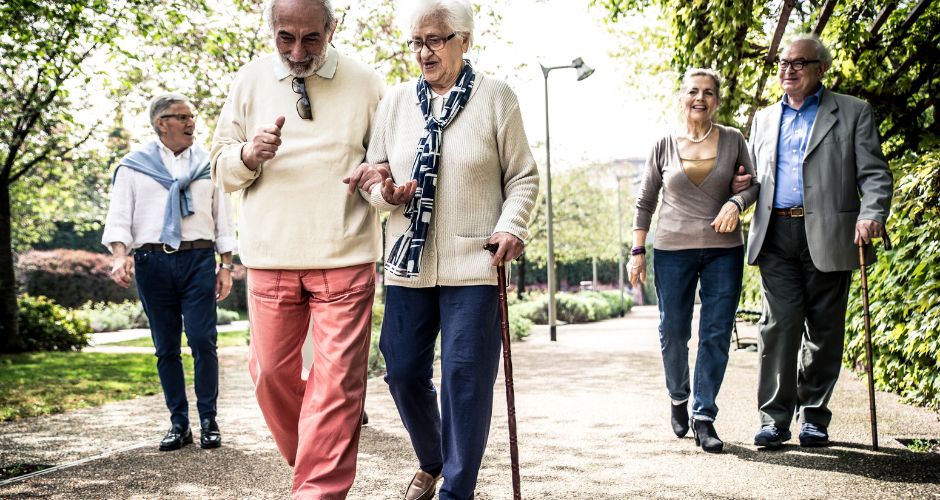Supporting Queenslanders With Arthritis | Arthritis QLD>About Arthritis>Arthritis Insights>Protecting your Joints>Empowering Independence: The Benefits of Assistive Devices for Arthritis
Empowering Independence: The Benefits of Assistive Devices for Arthritis
Empowering Independence: The Benefits of Assistive Devices for Arthritis
October 2023
Arthritis can present significant challenges in daily life, affecting people's ability to perform even the simplest tasks.
However, there's a wide range of assistive devices available that can make a world of difference for people living with arthritis.
In this article, we'll explore what assistive devices are, discuss their benefits, and highlight some common examples.

What Are Assistive Devices?
Assistive devices are tools or gadgets designed to enhance the independence and quality of life for people with physical limitations or disabilities, including arthritis.
These devices are created to aid in everyday tasks that might otherwise be challenging or painful for someone with arthritis.
From ergonomic utensils and jar openers to canes, walkers, and even specialised computer keyboards, assistive devices provide crucial support by reducing strain on joints, reducing pain, and promoting mobility.
By reducing the impact of arthritis on daily activities, assistive devices help people perform day-to-day tasks more easily and promote
both physical and emotional wellbeing.
Assistive devices can be a lifeline for people with arthritis, providing support and enhancing their quality of life.
The Benefits of Assistive Devices for Arthritis
#1. Increased Independence
Perhaps the most significant benefit of assistive devices is that they can allow people to keep their independence. Assistive
devices may allow people to carry out tasks that might otherwise be challenging or impossible due to arthritis-related limitations.
#2. Pain Reduction
Assistive devices can minimise the strain on joints with arthritis, as well as reducing pain and discomfort. It can make walking easier, as well as performing daily tasks.
Some examples include ergonomic chairs, cushions, and orthopedic mattresses, these can provide comfort and pain relief, especially during
long periods of sitting or sleeping.
#3. Improved Safety
Many assistive devices are designed with safety in mind. They can help prevent accidents and falls, particularly in older adults with arthritis, who may be at a higher risk of injuries.
Some examples are, installing handrails in bathrooms or ramps at entrances, these can make the home safer and more accessible for
those with arthritis.
#4. Improved Quality of Life
By making daily tasks more manageable, assistive devices can significantly improve people's overall quality of life. They can allow people to engage in activities they enjoy and maintain their independence.
Some examples can include, adaptive clothing where clothing may have easy fasteners and larger buttons which make getting dressed
simpler and less painful. As well as specialised tools like jar openers, buttonhooks, or adapted utensils - these can make daily tasks
easier and reduce strain on arthritic joints.
Common Assistive Devices for Arthritis
#1. Canes
Canes provide extra stability and support while walking. They can reduce the strain on hip, knee, feet and ankle joints. Different types of
canes are available, including single-point canes and quad canes with four tips for added stability.
#2. Walkers
Walkers offer even more stability than canes and are ideal for those with significant balance issues or joint pain. Some models come with
built-in seats for resting when needed.
#3. Grab Bars
Installed in bathrooms and other areas prone to slips and falls, grab bars provide a secure handhold for getting in and out of the
bathtub, shower or toilet and moving around the bathroom.
#4. Ergonomic Utensils
These specialised utensils have comfortable, easy-to-grip handles, making mealtime more manageable for people with arthritis in their
hands.
#5. Jar and Bottle Openers
These devices are designed to provide a better grip, allowing individuals to open containers and jars with less effort.
#6. Reacher Grabbers
Reacher grabbers have extended arms with a gripping mechanism at the end. They help people grab objects from high shelves or pick up items
from the floor without bending down.
#7. Adaptive Clothing
Adaptive clothing includes garments with features like Velcro closures or magnetic buttons, making it easier for those with limited
movement in their fingers and hands to dress independently.
#8. Key Turners
Key turners provide a larger, more comfortable grip for turning keys, which can be especially helpful for people with hand and
finger arthritis.
#9. Electric Can Openers
Electric can openers automate the task of opening cans, reducing strain on the hands, fingers and wrists.
#10. Stair lifts and Elevators
For those with arthritis-related mobility challenges, stair lifts and home elevators can be installed to help with movement between
different levels of the home.
#11. Fall Alarms
These devices can alert caregivers or emergency services in case of a fall, making sure there is a prompt response to any accidents.

Assistive devices are invaluable tools for people living with arthritis. They offer a path to increased independence, pain reduction, safety, and an improved overall quality of life.
The wide range of assistive devices available means that there's likely a solution to address nearly any arthritis-related challenge.
Consulting with healthcare professionals or occupational therapists can help determine the most suitable assistive devices to meet
individual needs, allowing people to navigate life with greater ease and confidence.
How Arthritis Queensland can help
- Speak with a peer-mentor in our free telephone service, Arthritis Assist.
- Access more information on arthritis, health, and emotional wellbeing. Download free information sheets and booklets, or read a range of arthritis articles.
- Join our fortnightly E-News and stay up-to-date with arthritis information
- Register for our online exercise program, Arthritis Moves.
- Have questions about living with arthritis? Call our free Infoline 1800 011 041 to speak with a member of our health team.
-
For help with finding health professionals, visit our Find
a Specialist
page.
JOIN OUR 12-WEEK ONLINE 'ARTHRITIS MOVES' EXERCISE PROGRAM.
Always talk to your doctor and/or health professional before starting an exercise program. A physiotherapist or exercise physiologist can suggest safe exercises and make sure you are doing your exercises correctly.

.png)